 Your new post is loading...
 Your new post is loading...
[00:00:10] You know what keeps them moving and growing and living? Tell me. It’s other catfish or that predator. So, if we never had predators in our lives. We’d stay stuck and we progress nothing. So every time we ask, “God, take away the stress, God, take away this issue,” we’re asking God to make us weaker, not stronger. [00:00:33] Because instead of asking like, “Hey, God, make me more creative, make me more passionate, make me more patient”. We ask, “Hey, take away this”. [00:00:45] But then we still want everything else that comes along with it. How does that work? [00:00:49] It’s easy. I don’t know. I mean, if you think about it, you know, from the first time we’re born, Danny. It’s not easy. Right. You’ve got to be one in a trillion sperm, really, and only to God, it’s very, very clear that, if you don’t get to that egg first? Done. Right. You’re done. So from the moment we’re given a chance, we’re on the point of destruction from the beginning. Exactly. So, in essence, why did that sperm get to that egg? Right. So you asked. It fought through. Fought through, right. [00:01:27] So, when you think of everything else as far as people complain, how people say, “oh, you know, I want more money, I want this”. But they don’t look at everybody’s backstory, the back end. And then behind the curtains, they think, “oh, man, Dr. Jimenez, you’re a doctor”. Sure, you don’t know how many times you’ve lost and rebuilt your practice or you’re a gym owner and you have it made. You don’t know how many times you have to go in at 4:00 in the morning to get a work out because you have to train people all day long to ensure that this business stays afloat. You know? Right. People don’t see that back end. Right. You know, they’re quick to say, “oh, it must be easy”. No, it’s not easy until you step into the person’s shoes because you’re the one that has to sign the checks. You’re the one that has to stay up at night and figure out payroll. You’re the one who has to be creative and figure out how you’re going to make ends meet. You’re the one that constantly has to be on it. You know, as much as you want to kick back and say whatever and do this. Well, I would love to work out four to five hours a day. That my passion. Is it your passion? It’s my passion. And do we? No, no. Right. What do we have to do? We have to be meticulous. We have to be disciplined. And we have to keep, I’m sure, we have to keep a proper order to ensure that we stay on top of schedule. Yes or no? Absolutely. Exactly. You know, so I’m saying at the end of the day is, if you don’t have something chasing you, you become fat and dormant and you become lazy. [00:02:54] I think nature is designed to eliminate you. Alex would say, you know, it’s survival of the fittest limiting the species or whatever he’d call it when he’s in biochemistry. You know, I got to tell you, it’s not easy to be a business owner. It’s not. It’s not easy when you have no sleep. [00:03:15] Ever since I’ve known you, you’ve put time in from early hours and you’re here from 430 in the morning and here. What time is it now? You’re here. You’re here. And we’re here sharing some stories. You know, it’s one of those things where it’s going to be nonstop all our lives. [00:03:29] But here’s the thing. If you don’t do it, it doesn’t stimulate you to become good at what you do. Right. You become lethargic and everything goes bad. Literally, you slowly begin the process of ceasing to exist. Right. [00:03:45] So, we all need rest. Right? Right. To rejuvenate. Get creative. It’s scientifically proven. You need that to reset. You have to. Otherwise, you burn out. Right? Right. But after how many days of rest? One. Two. Where you just get, disconnected, spastic. You know, you’re kind of like, “All right, cool. I rested enough. I’m good”. You don’t stay stuck there. [00:04:12] No, no, no, no. And I pray for vacation. Right. And when I get it, after about three days, I’m like, OK. Right. All right. I’m done. Let’s go. Yeah, OK. What am I going to break? What am I going to do? That’s how we are. Exactly. But that’s what makes you so successful, right? Yeah, well, it drives us. And it drives us in creating who we are. And it also gives us a vision as to what we’re going to do. You know, Danny, when we start these podcasts, we want to get a little bit or tell the people a little bit about the story of what you do. And tell them about, you know, where you’ve been and what’s been happening with you. OK. So for me, it’s very important to share with the people what is actually happening. [00:04:59] I’ve always been one to say, you know, I see how hard you work. And I see how much effort you put into things. But I’d like to know a little bit about you as to what actually made you and what kind of makes you click a little bit. When I actually discuss these things, I want to ask you what made you begin PUSH, what made you start this massive, massive organization. [00:05:25] I want to reach the masses of people and help people. Continued in the article...
The knee is the largest joint in the human body, where the complex structures of the lower and upper legs come together. Consisting of three bones, the femur, the tibia, and the patella which are surrounded by a variety of soft tissues, including cartilage, tendons and ligaments, the knee functions as a hinge, allowing you to walk, jump, squat or sit. As a result, however, the knee is considered to be one of the joints that are most prone to suffer injury. A knee injury is the prevalent cause of knee pain. A knee injury can occur as a result of a direct impact from a slip-and-fall accident or automobile accident, overuse injury from sports injuries, or even due to underlying conditions, such as arthritis. Knee pain is a common symptom which affects people of all ages. It may also start suddenly or develop gradually over time, beginning as a mild or moderate discomfort then slowly worsening as time progresses. Moreover, being overweight can increase the risk of knee problems. The purpose of the following article is to discuss the evaluation of patients presenting with knee pain and demonstrate their differential diagnosis.
The tendons are powerful soft tissues which connect the muscles to the bones. One of these tendons, the quadriceps tendon, works together with the muscles found at the front of the thigh in order to straighten the leg. A quadriceps tendon rupture can affect an individual’s quality of life. A quadriceps tendon rupture can be a debilitating injury and it usually requires rehabilitation and surgical interventions to restore knee function. These type of injuries are rare. Quadriceps tendon ruptures commonly occur among athletes who perform jumping or running sports.
Chondromalacia patellae, also referred to as runner’s knee, is a health issue in which the cartilage beneath the patella, or kneecap, becomes soft and ultimately degenerates. This problem is prevalent among young athletes, however, it may also develop in older adults who suffer from arthritis of the knee. Sports injuries like chondromalacia patellae are frequently regarded as an overuse injury. Taking some time off from participating in physical activities and exercise may produce superior outcomes. In the instance that the individual’s health issues are due to improper knee alignment, rest may not offer pain relief. Symptoms of runner’s knee include knee pain and grinding sensations.
Patellar tendinitis is a common health issue characterized by the inflammation of the tendon which joins the kneecap, or patella, to the shinbone, or tibia. The knee pain associated with this problem may range from mild to severe depending on the circumstances of the knee injury. Patellar tendinitis, or jumper’s knee, is a well-known sports injury among athletes who play in basketball and volleyball. Among recreational volleyball players, an estimated 14.4 percent of them have jumper’s knee, where the incidence is even higher for professional athletes. An estimated 40 to 50 percent of elite volleyball players have patellar tendinitis.
There’s always a particular risk for athletes when it comes to sports-related injuries, or sports injuries, particularly when participating in physical activities. Moreover, contact sports, such as soccer, baseball, football and basketball, tend to have higher injury rates than any other sport. Twice as many men suffer sports-related injuries in contrast with females as a consequence of the types of sports that they most commonly engage in. Whether you’re a seasoned and experienced athlete or you simply play as a weekend warrior, there’s always a chance of experiencing a sports injury. Below, we will discuss several of the most common types of sports injuries, or sports-related injuries.
Athletes who participate in overhead sports and physical activities, including baseball pitchers, tennis, swimming, water polo and throwing sport athletes, exert tremendous amounts of stress on their shoulders and its surrounding structures when they participate in their specific athletics. For instance, an elite baseball pitcher’s arm has been recorded at over 7000 degrees/second, which arguably makes it the fastest human body movement from any sport. Shoulder pain is a common symptom among the overhead athlete where throwing athletes will generally complain of dead arm, defined as a condition which restricts them from throwing at pre-injury speeds or control. SLAP, or superior labrum anterior-posterior, lesions are common causes of this type of dysfunction. A SLAP tear occurs on the glenoid labrum from the anterior to posterior angle of the long head of the biceps tendon. The glenoid labrum is a wedge-shaped fibrous tissue structure that is attached to the edge of the glenoid, functioning to deepen the glenoid cavity to improve stability as well as implement muscular control and proprioception. The anatomy of the proximal long head bicep tendon may actually vary but, in a majority of cases, it originates from the posterior superior labrum and it is broader and innervated more sensory fibres than the distal tendon.
Approximately 80 percent of the population has or will experienced acute or chronic symptoms of back pain at least once throughout their lifetimes, according to several research studies. While a great majority of these issues are only temporary and they do resolve on their own, the injuries and/or conditions behind the individual's back pain can accumulate tremendous financial burdens from the medical system over time, amounting to a great increase in medical expenses, including lost employee hours and a loss of productivity from the workforce if the affected individual has to take time off to recover from their specific type of back pain. Among the many types of complications, most described as extension related low back pain, some of the most common include: spinal disc herniation and bulges; degeneration of the spine; annular tears; ligament sprains; muscle strains, particularly in the quadratus lumborum; osteoarthritis; rheumatoid and ankylosing spondylitis; facet joint sprains; and stress fractures, pars defects and spondylolisthesis. However, bone injuries causing extension related low back pain can be a series of progressive disorders or pathologies along the lumbar spine, caused by the excessive amount of uncontrolled lumbar spine extensions among many athletes. These could basically occur due to a postural, gradual onset of repetitive trauma, most frequently associated with sports, for instance, gymnastics. Two specific demographic groups experience the most extension related low back pain among the general population: the first group includes individuals who stand for prolonged periods of time, such as retailers, military, security guards, etc. Standing for extended periods of time normally forces the pelvis to begin shifting into an anterior tilt angle, placing compressive forces against the facet joints of the lumbar spine as these will also begin to shift towards a position of extension following the pelvic tilt; and the second group includes athletes who participate in extension sports, such as gymnastics, tennis, swimming, diving, football, volleyball, basketball, track and field, and cricket fast bowlers, and experience sports injuries. This may be more distinct in sports which include extension/rotation.
As individual’s increase their cardiovascular activity, sprains and muscle strains on the surrounding tissues of the hamstrings, quadriceps, and calf muscles become several of the most common type of injuries. Back injuries also become more frequent during periods of higher activity. More severe types of injuries can often lead to muscle, tendon, or ligament tears as well as bone fractures. A successful exercise program provides a complete training routine which equally conditions different muscle groups while reducing the chance of injury. In addition, seeking chiropractic care and physical therapy to help during injury prevention can further maximize an individual’s performance. Exercise related injuries mainly occur due to improper biomechanics. The improper movements of an individual’s structure during physical activities or sports are often the root cause of spinal misalignments and muscle imbalances. If the body is not moving or functioning the way it was designed to, it can place unnecessary pressure and stress on a single side of the body or an incorrect area of the body. An injury and its associated symptoms, can tremendously reduce an individual’s ability to perform to their fullest capacity, ultimately altering an individual’s lifestyle. Regular chiropractic care and massage therapy can help diagnose and determine the source of your injury as well as help treat the injury and its symptoms. Combining chiropractic care along with physical exercise this summer can ultimately improve your fitness, health and wellbeing.
|
The knee is one of the most complex joints in the human body, consisting of the thigh bone, or femur, the shin bone, or tibia, and the kneecap, or patella, among other soft tissues. Tendons connect the bones to the muscles while ligaments connect the bones of the knee joint. Two wedge-shaped pieces of cartilage, known as the meniscus, provide stability to the knee joint. The purpose of the article below is to demonstrate as well as discuss the anatomy of the knee joint and its surrounding soft tissues.
Knee pain is a common health issue among athletes and the general population alike. Although symptoms of knee pain can be debilitating and frustrating, knee pain is often a very treatable health issue. The knee is a complex structure made up of three bones: the lower section of the thighbone, the upper region of the shinbone, and the kneecap. Powerful soft tissues, such as the tendons and ligaments of the knee as well as the cartilage beneath the kneecap and between the bones, hold these structures together in order to stabilize and support the knee. However, a variety of injuries and/or conditions can ultimately lead to knee pain. The purpose of the article below is to evaluate patients with knee pain.
The knee is a made up of a variety of complex soft tissues. Enclosing the knee joint is a fold at its membrane known as the plica. The knee is encapsulated by a fluid-filled structure called the synovial membrane. Three of these capsules, known as the synovial plicae, develop around the knee joint throughout the fetal stage and are absorbed before birth. However, during one research study in 2006, researchers found that 95 percent of patients undergoing arthroscopic surgery had remnants of their synovial plicae. Knee plica syndrome occurs when the plica becomes inflamed, generally due to sports injuries. This often takes place in the center of the kneecap, known as medial patellar plica syndrome.
Sinding-Larsen-Johansson, or SLJ, syndrome is a debilitating knee condition that most commonly affects teens during periods of rapid growth. The kneecap, or patella, is attached to the shinbone, or tibia, from the patellar tendon. The tendon connects to an expansion plate at the bottom of the kneecap throughout growth. Repetitive stress on the patellar tendon can make the growth plate within the knee become inflamed and irritated. SLJ mainly develops in children and adolescents between the ages of 10 and 15 because that is when most people experience growth spurts. SLJ is most common in young athletes due to excess or repetitive strain in the knee.
The piriformis muscle extends to the top of the femur around the sciatic nerve. The femur, as previously mentioned, is the large bone in the upper leg. The piriformis muscle functions by helping the thigh move from side to side. A piriformis muscle spasm, or any other type of injury and/or condition along the piriformis muscle, can place pressure on the sciatic nerve and cause pain and discomfort. The result is piriformis syndrome. Piriformis Syndrome Causes and Symptoms
Sciatic nerve pain, or sciatica, is one of the most prevalent symptoms of piriformis syndrome. The pain and discomfort, however, may be felt in another part of the body. This is known as referred pain. Other common symptoms of piriformis syndrome include tingling sensations and numbness; tenderness; difficulty sitting along with pain while sitting and pain in the buttocks and thighs with physical activities.
The piriformis muscle can easily become damaged or injured from periods of inactivity or an excessive amount of exercise. Some common causes of piriformis syndrome include overuse; repetitive movements involving the legs; sitting for lengthy periods of time; lifting heavy objects; and extensive stair climbing. Sports injuries or automobile accident injuries can also harm the piriformis muscle and cause it to compress the sciatic nerve.
Sciatica is generally described as a set of symptoms, primarily characterized by pain and discomfort, along with tingling sensations and numbness. Athletes frequently report experiencing symptoms of sciatica, however, there are many factors as well as a variety of injuries and conditions which can manifest these well-known symptoms. Piriformis syndrome is a disorder that is frequently confused with symptoms of sciatica. The piriformis muscle is commonly known among athletes and healthcare professionals as a significant muscle in the posterior hip. This muscle functions to control hip joint rotation and abduction and it is also a distinguishable muscle due to its inversion of action in rotation. The piriformis muscle also raises awareness as the various causes of piriformis syndrome, a condition suspected to be a potential source of pain and dysfunction, not only in athletes, but in the general population as well.
Visit the Mercola Video Library
By Dr. Mercola
Dr. Eric Goodman is the creator of Foundation Training, a highly effective protocol. Foundation Training focuses on body weight exercises that integrate as many muscles as possible to strengthen and elongate your core and posterior chain — which includes all the muscles that connect to your pelvis, whether above or below it — thereby alleviating many chronic pain issues.
The protocol has evolved over the years, and I’ve interviewed Goodman twice before, in 2013 and the most recent two years ago in 2014, covering various updates.
In this interview, he delves into some of the details covered in his latest book, “True to Form: How to Use Foundation Training for Sustained Pain Relief and Everyday Fitness.”
Goodman, who is trained as a chiropractor, is a pioneer in the world of structural biomechanics. His program teaches you to optimize your posture, thereby decreasing bodily pain and your risk of exercise injury.
“The idea is really simple. Our body is made to help itself. As long as we can get the muscles to align it properly, our breathing patterns to align properly, our pelvic muscles to be more stabilized, our posture will involuntarily become stronger,” he explains.
“My education is in chiropractic. I’m licensed in Colorado and California, but I only really see patients if they need an adjustment for some reason that they can’t do the poses.”
Why Foundation Training?
While in chiropractic school, Goodman developed severe low back pain. His doctors suggested surgery, which he wisely rejected. Instead, his own pain set him on the path of discovering a long-term solution, which ultimately resulted in Foundation Training.
“My passive care was good. I was getting chiropractic care. I was being stretched. I was being massaged and worked on. But I wasn’t strengthening my spine myself. That’s the difference that I made,” he explains.
“I don’t think that I will ever negate chiropractic, because I love chiropractic. I love the ability and capacity to align the body, align the nervous system and create a very good environment for different process to occur.
[But] if you’re going to get your neck adjusted, I want your neck to stay long and strong afterwards, because that’s what’s going to stop you from having that same adjustment again a week later.”
While obsessively studying anatomy, alignment and exercise in an effort to resolve his back pain, Goodman began to notice that he, and many other people who were in pain, could not move the way the body was designed to move, and this was causing a degenerative effect — and those who were moving properly were able to regenerate and increase strength, while reducing injury and pain.
“I was in chiropractic school. I really understood the body well. I decided that this is going to become an obsession. I’m going to figure this out. I can’t become a doctor, have patients come to me that are asking for my advice on an injury that I have that I can’t fix. It’s not OK.
So, over the course of about four years, I did that. I became very obsessed. I used my anatomy knowledge. I used my understanding of exercise.
I was a personal trainer actually long before a chiropractor. Foundation Training is what I came up with. It’s what I do for myself every single day, and it’s what I’ve been extraordinarily fortunate to teach to thousands of people at this point.”
The secret to Foundation Training lies in its simplicity: no gyms, no specialized equipment and no complicated stretches. By incorporating a series of powerful movements into your daily routine, you can move better, breathe better and get back to using your body the way nature intended.
Addressing Back Pain
Low back pain is a very common problem, and the most common reason why people seek out Foundation Training. In the video below, Goodman demonstrates a back extension exercise that is particularly helpful for back pain relief.
The premise is simple. By strengthening the muscles in your back, they will keep your spine properly braced through all the movements you do as you go about your day-to-day life.
Overall, about 7 out of 10 people who learn Foundation Training do so to address back pain, 2 out of 10 seek to improve their sports performance and the remaining 10 percent typically seek to address knee pain, neck pain, jaw pain, plantar fasciitis, carpal tunnel and other chronic pain.
How to Get Started With Foundation Training
In addition to their latest book, “True to Form,” Foundation Training offers a variety of ways to get the benefits of their system, including their free videos on their website at www.FoundationTraining.com.
Foundation Training also offers certification for clinicians, practitioners, trainers and instructors who are looking to share this groundbreaking and highly effective protocol with their clients and patients.
“There are probably more people using our free videos to get well than using our DVDs and books,” he says. “That’s awesome. That’s why we have free videos.
Our latest book, ‘True to Form,’ is our illustrative process of bringing Foundation Training into your everyday activities — brushing your teeth, waking up from bed, reaching into the refrigerator, whatever, how to apply very simple movement patterns that make you stronger while you do that.
Then if you want to really get into it, we have DVDs and we have a new streaming website. If you’re really into it … come to our workshop or certification. If you come to our workshop and you decide you want to go through a certification, we take the amount of money you paid on the workshop, 100 percent of it, off the cost of the certification.”
While millions of people have gotten started through the free Foundation Training videos, the optimal way to get the most out of Foundation Training is the comprehensive step-by-step program offered on their website or a certified Foundation Training instructor.
The Importance of Posture for Ease of Movement and Health
As noted by Goodman, “Posture is a beautiful thing, except when it’s messed up.” Indeed, while I see many people walking the beach during my daily walks, poor posture is the norm, with hunching being one of the most prevalent posture problems. Indeed, “standing tall” is so basic yet most have forgotten how to do it. When you stand tall, your muscles actually work more effectively.
“We naturally adapt towards our chosen method of absorbing gravity … Our muscles absorb force … Whether they’re contracting or expanding, they are absorbing or providing force.
If you take the opportunity of gravity — this ever-present weight of your own body — and simply provide 5 percent more energy in absorbing it, 5 percent more conscious effort throughout the day, it’s going to change your life forever. It’s going to have people reacting to you differently. It’s going to have you reacting to things like anxiety differently. You’re going to feel the difference of a closed airway and an open airway.
You’re going to feel the tightness of your jaw from the head traveling to forward, contracting the back of your neck when you’re in a bad posture … You start interacting with people like a confident human being interacts.”
Patience and Practice
Most people have poor posture these days. Besides chronic peering down on your smartphone or tablet and excessive sitting, which encourages poor posture unless you’re paying careful and active attention to your body at all times, we’ve also been taught certain posture strategies that actually worsen posture rather than improve it.
Pulling your shoulders back to straighten your posture is one example. As noted by Goodman, this is a “compartmentalized correction” at a place that’s not actually causing the problem. More than anything else, the places that cause the problems in posture are the upper and lower ends of your spine.
A very basic explanation is that your upper and lower spine should be pulling away from each other, not compressing or falling toward each other. So the back and top of your head needs to be pulling away from your tailbone, straight up and neither forward nor backward.
As for how long it might take to correct your posture, it clearly depends on your individual and specific circumstances: how long you’ve had poor posture, how much time you dedicate to corrective exercises and the extent of your postural problems.
“It may be a matter of weeks to months. I believe for some people it may be a year [to complete] the whole process. [But] they’re going to be feeling better along the way. They’re going to notice incremental changes. They’re going to see that their body is supporting itself better steadily. They’re thinking about it less. They’re feeling less pain. They’re feeling better posture. That’s when the real changes start to happen. But there’s no set timeline.”
Walking 101
Walking is foundational for optimal health, and walking with good posture can really maximize your benefits. Your choice of footwear can have a significant influence here. When walking in sneakers or heels, your heel is raised higher than your toes. This in turn makes your arch tighter, which completely alters your range of motion. So, to start, walk barefoot or find a pair of zero-drop shoes.
The rationale behind walking barefoot has to do with plantar flexion, the shortening of the muscles on the back of your ankle and the lengthening of the muscles at the front of your ankle and shin. When walking barefoot, you alter the way the back of your body absorbs force for the better.
Dorsiflexing is a tremendously important piece of walking. This is where you’re lifting the top of your foot toward your shin. When you’re walking with plantar flexion (due to wearing heels), you rarely dorsiflex, thereby contracting and shortening the muscles of your shin.
“That’s Step 1, making sure that there is good dorsiflexion in every step,” Goodman says. “Literally lift the top toes away from the ground. Lift the balls of the feet away from the ground and try to spread your feet a little bit. That will allow your hips to follow a much more natural range of motion. As your feet dorsiflex, it triggers these muscles of the inside and outside of your legs.
Those muscles have internal rotation capacity and external rotation capacity. Both of which are very important for walking … The ability of the adductors, the medial hamstring, the muscles of the inner part of the thigh, the inner upper part of the thigh, to contract during a walk, to spin that hip a little bit more neutral towards straight ahead …
Long story short, range of motion of the hips is so significant to walking. That range of motion is limited most frequently in people at the feet with plantar flexion, excessive plantar flexion or excessive external rotation.”
Head Posture While Walking
The other piece of the puzzle is the location of your head. Most people walk as if they’re sniffing their way forward, head leading the rest of the body. A more natural posture is to lift your chest upward, which allows your shoulders to lift and your chin to retract more or less automatically. So think: “Chest up, chin back.” Initially, this may feel and even look a bit awkward, but you’ll notice it’s a significantly more powerful way to walk, allowing you to engage more muscles.
“If you simply focus on chin back, chest up, shoulders big, broad, not backing down but out — if you focus on that — you’re going to be walking very different. You’re going to experience this really rhythmic counterbalance in your walk. When the right foot comes forward, the shoulder comes forward on the opposite side.
It’s just these nice little muscular glutes, hamstrings, calves, adductors across the body to the opposite shoulder and pec … So many muscles involved. It’s the SCMs that are very important as well to keep that chin back, chest up function happen.”
Preventing iPhone Neck and Dowager’s Hump
The chest up, chin back posture will not only make you look better, but proper posture may also help prevent osteoporosis and significantly reduce your risk of developing a dowager’s hump, which tends to be quite common among the elderly, and women in particular.
This forward slumped posture tends to be related to chronic improper posturing that worsens over time, eventually leading to the development of rigid intractable calcifications. The beginning of the progression of the dowager’s hump is typically the loss of thoracic extension.
“I think the lack of movement and stagnation in bone leads to calcification and typical degenerative changes. Degenerative changes along with spine make it less mobile … It supports it because the muscles aren’t, the discs aren’t. It puts very rigid support structures in place.
Now, can you imagine 20, 50 years from now, when it’s 60 or 70 years after cellphones and iPads came around, the dowager’s humps, we can start calling them the iPad hump … The younger you are, the more capacity you have to be plastic, to engage your body’s natural tendency to respond to stimulus in such a fashion that will get better and better at doing the thing you’re asking it to do.
If you’re often asking it to look down at your phone, please often ask it to lift your chest up, to pull your chin back and to just stand very firm on the ground. Just look at your phone while keeping your chin back and chest up.”
According to Goodman, even if you’ve already started to develop a slight hump, chances are you’ll be able to significantly improve your alignment provided your spine has not yet calcified. Exceptions might be if you have ankylosing spondylitis (AS) or diffuse idiopathic skeletal hyperostosis (DISH). Naturally, the younger you are, the more room for improvement there is.
Decompression Breathing
One important aspect of Foundation Training is what Goodman refers to as compression breathing. With his breathing protocol, you literally re-educate the muscles surrounding your axial skeleton, the spine of your rib cage, teaching them to be in a state of expansion rather than contraction. You’ll find a demonstration of this technique in the video above, followed by another founder exercise.
“[This breathing technique] is something that’s always going to set our work aside from everything else. Not better. Not worse. Different. It’s an accessory,” Goodman says.
“Decompression breathing, which can be taken and applied to any movement, any exercise, any activity … will do more for your spine, more for your chest and neck, more for your dowager’s hump … than anything else I can possibly teach you. The unique thing about it is our specific protocol of learning how to engage the diaphragm more appropriately by drastically strengthening the muscles that surround the rib cage.”
Here’s a quick summary of the compression breathing exercise demonstrated above:
Position your feet so that the OUTSIDE of your feet are parallel. This will make it appear as though you’re standing slightly pigeon-toed
Pull your chin back and lift your chest
Place your thumbs at the bottom of your rib cage, and your pinkies on your pelvic bone
With each breath, your aim is to increase the distance between your thumb and pinky fingers, as well as increase the width of your upper back. This occurs as you elongate the back of your rib cage. Each inhalation expands your rib cage, and each exhalation will keep the abdomen extended and tight. So each in-breath fills up your rib cage, and each out-breath maintains the height and width of your rib cage
Repeat five to 10 rounds with three to four breaths per round
More Information
You have many options when it comes to learning Foundation Training. You can start by reading through or listening to my previous interviews with Goodman, “How Foundation Training Can Help You Maximize Strength and Freedom of Movement” and “New and Revised Foundation Training Exercises Add Even Greater Health Benefits.”
For free video demonstrations and tutorials, be sure to check out FoundationTraining.com and the free videos they have available at their site. For even more in-depth information, pick up Goodman’s latest book, “True to Form: How to Use Foundation Training for Sustained Pain Relief and Everyday Fitness.” Join Foundation Training Connect or check out their free resources at FoundationTraining.com/free-resources.
Just remember, the key is to actually DO the exercises. Just reading about them or watching a video will do you no good. The good news is, even if you’re wheel-chair bound, you can perform the compression breathing exercises, which will, at bare minimum, help you breathe better.
“I have a friend that is [in a wheelchair] and we do some of those workouts. He’s a very good guy from Oklahoma City, but had a very tragic accident. I really hope I get to spend some more time with that guy and see what we can do just based on breathing,” Goodman says.
Source:
Mercola.com
From runners to many other types of athletes, experiencing an accident that results in damage or injury, or developing a previous condition is not uncommon among athletes. Subsequently, a majority of athletes practice preventive measures or they stretch and exercise accordingly before performing in their specific sport or physical activity to avoid any injuries which could remove them from training or competition. Heel pain is among one of the most frequent symptoms athletes report from their sessions, especially since the feet are practically essential in most sports and physical activities. Plantar heel pain is frequently diagnosed by healthcare professionals, including chiropractors and sports clinicians, often recorded due to mechanical, neurologic, traumatic or other systemic conditions. Without a doubt, plantar fasciitis is the most common pathology among sporting environments. However, other causes of heel pain may be previously considered when evaluating an athlete with heel pain. Up to 2 million Americans describe symptoms of heel pain every year, accounting for an estimate of up to $400 million in medical bills. Regardless, not much is known about the pathophysiology and etiology of plantar heel pain. By emphasizing on the causes of plantar fasciitis as well as discussing other common mechanical issues behind heel pain, including plantar fascia tears/rupture, heel pain of neural origin, calcaneal stress fractures and atrophy of the heel pad, individuals can learn to understand the diagnostic criteria and possible treatment options of plantar heel pain.
Many athletes, specifically running athletes, frequently seek chiropractic treatment for iliotibial band syndrome. These individuals often describe feeling radiating pain that begins on the outside of their knee that extends throughout their thighs, hips, and even their lower back. The iliotibial band, or the IT band, is a cord of connective tissue that starts at the side ridge of the pelvis, or the ilium, and travels down the side of the leg, attaching into the weight bearing bone of the lower leg, or the tibia, located near the knee. IT band syndrome is a very common condition occurring in runners and cyclists. This condition frequently results from any activity that causes the leg to turn inward repeatedly. Wearing improper or worn-out shoes, running downhill and constantly in the same direction, or simply from running too many miles, iliotibial band syndrome is an injury caused by overuse where constant rubbing between the band and the bone irritates the tissue and causes inflammation. Through spinal adjustments and manual manipulation, the chiropractor can restore the natural alignment of the spine, gradually improving the individual’s IT band syndrome and its symptoms as well as the runner’s gait and running posture to prevent further complications.
|



 Your new post is loading...
Your new post is loading...

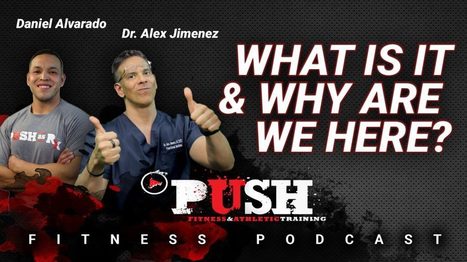

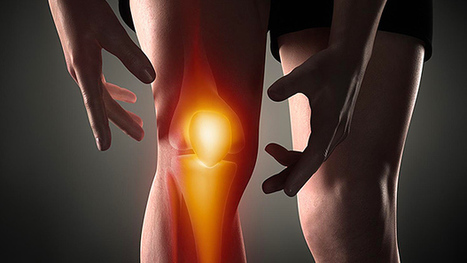
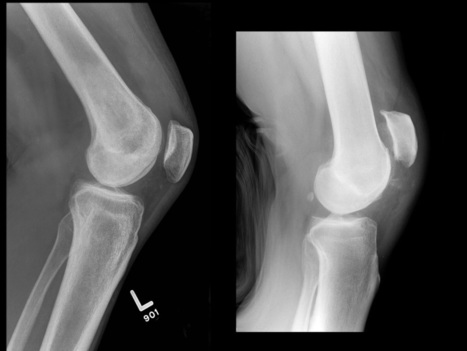
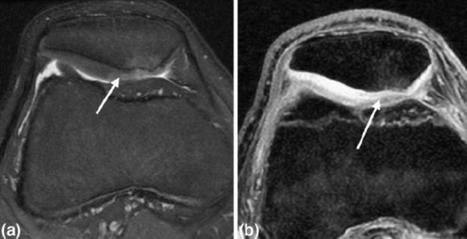

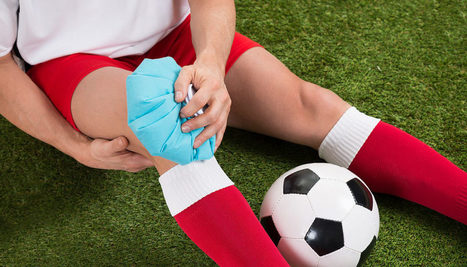
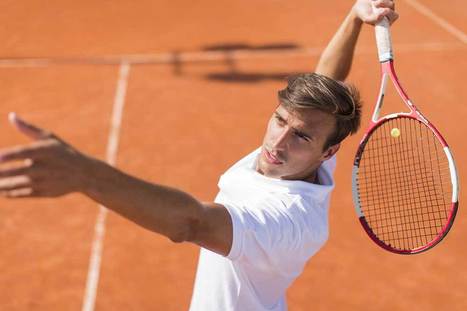
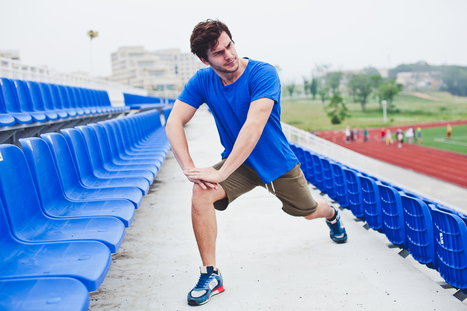
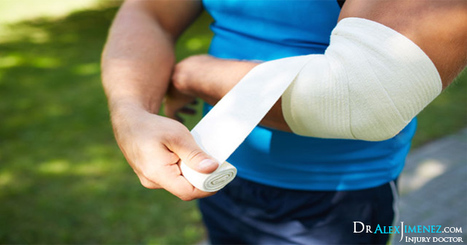
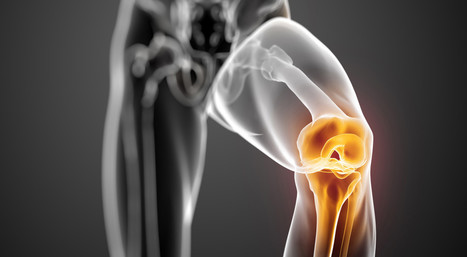

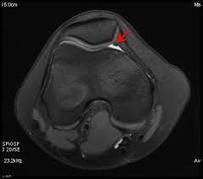
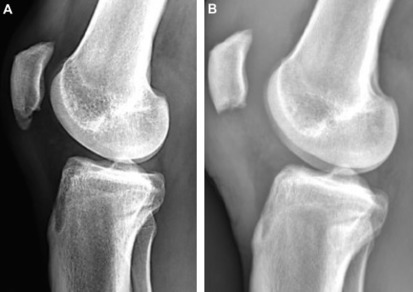
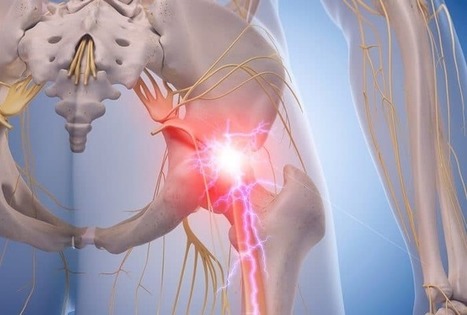
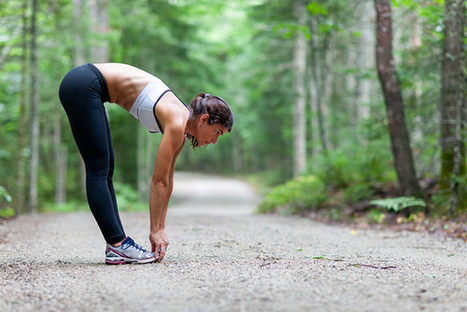
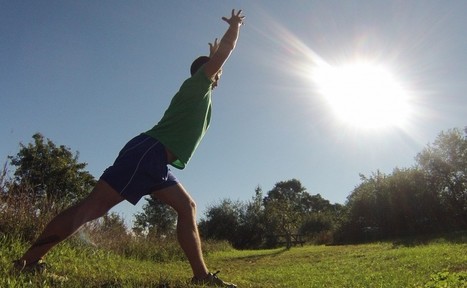
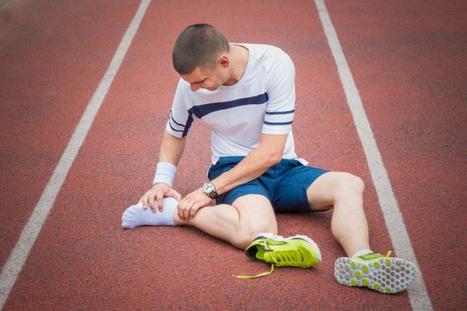
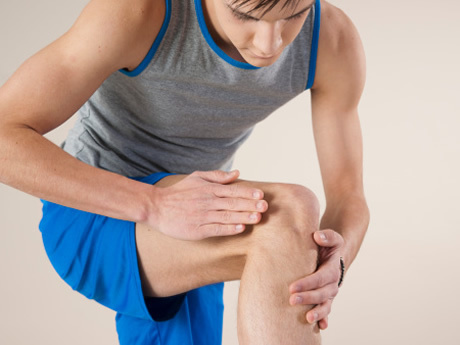





Dr. Alex Jimenez, chiropractor in El Paso, TX, talks to Daniel Alvarado, owner of the PUSH Fitness Center, in the PUSH Fitness podcast about his purpose for creating his business. For more information, please feel free to ask Dr. Alex Jimenez or contact us at (915) 850-0900.